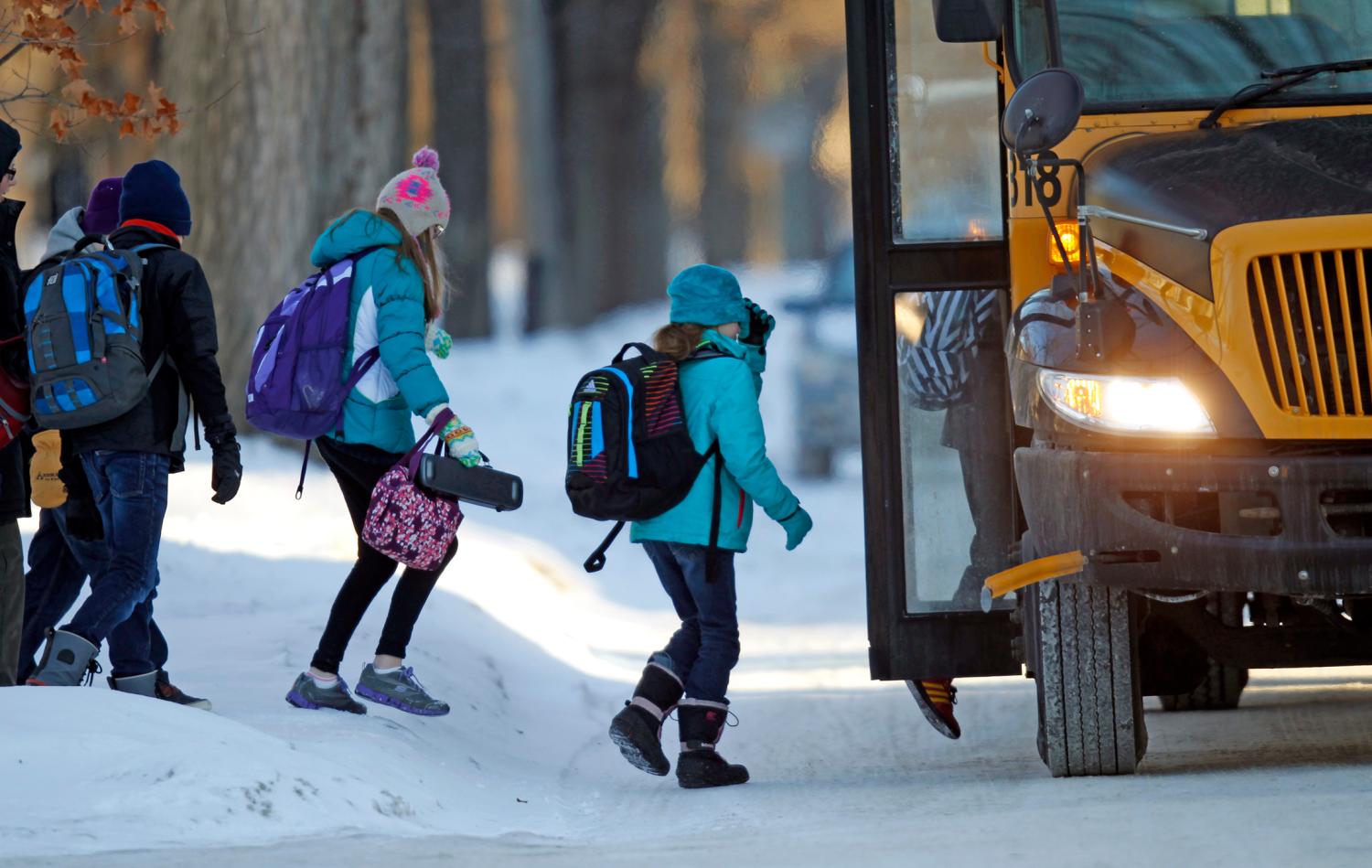With the new administration in Washington, school choice is in the news. Secretary of Education Betsy DeVos is a long-time school choice proponent, and the administration has signaled it is likely to pursue some big-ticket school choice reforms. Whereas most of the energy in the school choice debates has focused on vouchers and charter schools, relatively little attention has been paid to another important choice model that serves as many students as charters and has been in existence for longer—magnet schools.
Magnet schools are schools of choice1 that have themes (e.g., STEM, arts, gifted/talented). Initially a tool for desegregation efforts in the 1970s (i.e., by encouraging white parents to stay in urban districts), magnets have evolved to serve a wide variety of purposes and settings. While magnet schools are widely prevalent—there are over 3,000 magnets across more than 600 school districts within 34 states—they have received less attention in the research literature than charters. For instance, a Google Scholar search of “magnet schools” research published since the year 2000 returns less than half the hits of a search for “charter schools.” Only three pieces published in that span with “magnet schools” in the title are cited over 100 times, as compared to at least 25 “charter schools” pieces. The scant magnet school literature is largely focused on two issues: a) their achievement effects2 and b) their effects on socioeconomic or racial segregation3 (by far the largest focus of the extant research).
The purpose of this brief is to reintroduce magnet schools, describe their prevalence and characteristics, and propose some key research questions about these not-new-but-still-important schools of choice.
Data
The data for these analyses come from two sources. First, we gathered the universe of public schools from the Common Core of Data (CCD) for 2014-15.4 This dataset contains names and IDs for all public schools in the United States, as well as basic descriptive information such as their enrollment, demographics, urbanicity, and whether they are charters or magnet schools. We use this dataset to characterize the population of magnet schools in the United States.
Magnet schools are many-splendored things, however, and we sought to know more about them—their themes, whether they have selective admissions criteria, whether they are co-located with a traditional public school (TPS), etc. To that end, we gathered this information from school and district websites for every magnet school in the state of California (n = 504). We use these data to describe the magnet schools in more detail and characterize the variation among schools under the magnet umbrella.
Specifically, we answer three primary research questions:
- What is the prevalence of magnet schools by state?
- What kinds of students are served by magnet schools and how do they differ from charters and traditional public schools in their same school districts?
- What are the most typical types of magnets in California and how do student characteristics differ across magnet types?
What is the prevalence of magnet schools?
Magnet schools comprise just 3.7 percent of public schools in the United States,5 just over half as many as there are charter schools.6 However, there are large variations in magnet presence by state, as shown in Table 1. There are 12 states where magnets comprise greater than 4 percent of all schools (these are the states listed in Table 2). Florida, Michigan, and South Carolina have the greatest proportion of magnets—over 10 percent in each state—and Florida, California, and Michigan have the largest absolute number of magnets. Across the nation there are 608 school districts that have at least one magnet school; the top three school districts have over 100 magnet schools (Los Angeles Unified= 161, Miami-Dade=107, and Houston ISD=102). Most districts have just a few magnet schools—roughly 40 percent of these school districts have 10 magnet schools or fewer.
While magnet schools are just under 4 percent of the schools in the U.S., they serve 6.7 percent of our students. This reflects the fact that magnet schools are very large on average—798 students, as compared to 380 in charters. In fact, according to the Common Core of Data, magnet schools serve more total students (2.52 million) than charter schools (2.19 million). Magnets are especially large in some of the states in which they are most prevalent—over 1000 students in California and Florida. The large size is likely due to the fact that magnets are overwhelmingly an urban (55 percent of magnet schools) and suburban (32 percent) phenomenon (traditional public schools are 26 percent urban and 31 percent suburban).
What kinds of students are served by magnet schools?
There are large differences across states in the demographics of students in the three sectors, as shown in Table 2.7 In terms of the proportion of students receiving free- or reduced-price lunch, both magnet and charter schools are less impoverished than traditional public schools in their same districts in most states (exceptions include Nevada for both magnets and charters and Florida and North Carolina for magnets only). Most of the time, these differences are small for magnet schools—in seven of the twelve states, magnets and TPS differ by five percentage points or less in the proportion of students receiving free or reduced-price lunch. The differences are somewhat larger for charters in some states.
The story is different for underrepresented minority students (in this case operationalized as black and Hispanic students). Magnet schools have higher proportions of black and Hispanic students than TPS in eight of the twelve states, and charters have more black and Hispanic students than TPS in six of the ten states where those analyses can be run (again, these are controlling for district fixed effects). Maryland and Nevada are two states where both magnets and charters have more black and Hispanic students than TPS. The magnitude of these differences is generally not large, however.
What are the most typical types of magnets?
Magnet schools themselves are far from monolithic. There is a wide range of different themes for the 504 California magnets, which are scattered across 87 school districts.8 Most people probably think of the “gifted” or “high achieving” version of magnet schools with selective admissions criteria, but these are less than 20 percent of California magnet schools (81 of the 504). In fact, only 100 of the magnets appear to have any selection criteria at all. There is also variation among the magnet schools with selective criteria. For instance, some magnet schools’ admission criteria solely focus on academic ability and achievement, while others include behavior, request for recommendations from teachers/counselors, and written essays. The three most common themes appear to be STEM/STEAM/engineering8 (75), performing or visual arts (44), and health or medicine (36). There are dozens of other themes across the state, including global or international studies, hospitality, automotive, Montessori, bi- or trilingual education, and agriculture.
These theme magnets differ themselves in their demographic compositions. On average, California magnets are 62 percent free- or reduced-price lunch, but gifted magnets are less impoverished (58 percent) and health/medicine are more impoverished (69 percent). Similarly, gifted magnets are more white and Asian (34 percent) than average (29 percent), while STEM schools are less (25 percent).
Discussion and suggestions for research
Magnet schools serve millions of American students every year, yet they receive disproportionately scant attention in research and policy. This post was intended to draw attention to magnet schools, their prevalence, and their tremendous diversity.
Given the state of the literature, we have several suggestions for future research on this topic. First, there is of course great need to understand how effective magnet schools are for the students that attend them. There is a large charter school literature than can inform the methods for this research, and there is some magnet literature as well.9 Second, there is an ongoing to need to understand the implications of magnet schools for the traditional public schools in their districts. Do gifted magnets skim the highest achieving students and harm the remaining schools (a claim that is often levied at charters)? To what extent do magnets further goals of racial or socioeconomic integration? Third, there are important descriptive questions to understand what goes on in themed magnets—are curricula and instruction different than in traditional public schools, for instance? Finally, what are the long-term effects of these schools? Do magnets with career-oriented themes produce greater career readiness and success? Some of these questions have begun to be addressed in the existing literature, but the availability of richer data and more sophisticated methods means that there is an opportunity to revisit these issues.
These questions are just the start of what we believe should be a robust agenda around this large sector of American public schools.
The authors did not receive financial support from any firm or person with a financial or political interest in this article. They are currently not officers, directors, or board members of any organization with an interest in this article.
-
Footnotes
- The large majority of magnet schools are schools of choice. In California, 8 percent of magnet schools are not involved in choice systems, however (i.e., they are neighborhood schools or admission is otherwise not determined by parent choice).
- See for instance Ballou, D. (2009). Magnet school outcomes. In M. Berends, et al. (Eds.), Handbook of Research on School Choice (pp. 409-426). New York, NY: Routledge.
- See for instance Archibald, D. A. (2004). School choice, magnet schools, and the liberation model: An empirical study. Sociology of Education, 77(4), 283-310. See also Goldring, E., & Smrekar, C. (2000). Magnet schools and the pursuit of racial balance. Education and Urban Society, 33(1), 17-35.
- We are limited by the quality of the CCD indicators on magnet schools. There are considerable year-to-year fluctuations in the numbers of magnet schools reported in the CCD (https://nces.ed.gov/programs/digest/d14/tables/dt14_216.20.asp), for instance going from approximately 2200 in 2009-10 to 3150 in 2012-13. Thus, while are results are correct based on the data provided in the CCD, we have no way of verifying whether the CCD data are themselves correct.
- Arizona, Massachusetts, New York, Ohio, and Arizona have large proportions of missing data on the “magnet” indicator in the CCD. These states are therefore excluded from all analyses presented here. In the remaining states there is a very small proportion (< 1 percent) missing data on the magnet indicator. A visual inspection of school names suggests zero of the schools with missing data on this indicator are magnet schools, so they are all coded as traditional public schools.
- A small number (102) of schools are identified as both magnet schools and charter schools in the Common Core of Data. We treat these as magnet schools in all analyses. Thus, “charter school” here means “charter, non-magnet school.”
- Because magnet and charter schools draw more heavily from urban areas that have distinct demographics, it is important to account for these geographic differences. We accomplish this with district fixed effects, so the differences reported in Table 2 can be thought of as an average within-district difference in demographics between the different sectors. We cannot adjust for more local differences, such as by catchment area, so it is possible that some of the differences identified in Table 2 are due to differences in the geographic placement of these schools within districts.
- Only schools that listed STEM, STEAM, or Engineering were included in this count—there are also other magnets that have science-related themes, such as environmental science.
- See for instance Dobbie, W. & Fryer, R. G. (2014). The impact of attending a school with high-achieving peers: Evidence from the New York City exam schools. American Economic Journal: Applied Economics, 6(3), 58-75. Ballou (2009), cited above, also offers evidence on this issue.
The Brookings Institution is committed to quality, independence, and impact.
We are supported by a diverse array of funders. In line with our values and policies, each Brookings publication represents the sole views of its author(s).







